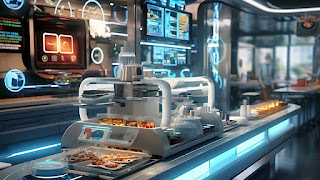Restaurant Analytics: An Introduction
Restaurant analytics refers to the systematic analysis of data related to various aspects of a restaurant’s operations. From tracking sales and inventory to monitoring customer preferences and staff performance, restaurant analytics harnesses data to provide valuable insights that can drive decision-making and improve efficiency. With the advent of sophisticated technology and data analytics tools, restaurant owners and managers can now make data-driven decisions that enhance the overall dining experience and streamline operations.
Enhancing Customer Experience through Data Insights
One of the most significant benefits of restaurant analytics is its ability to enhance the customer experience. By analyzing customer data, restaurants can gain insights into dining preferences, peak hours, and popular menu items. This information allows for personalized marketing efforts, such as targeted promotions and loyalty programs that cater to individual customer preferences. Additionally, real-time feedback and review analysis help identify areas for improvement, ensuring that customer satisfaction remains high. Restaurants that leverage these insights can create more tailored and engaging dining experiences, ultimately fostering customer loyalty and repeat business.
Optimizing Inventory and Supply Chain Management
Effective inventory and supply chain management are crucial for the profitability and sustainability of any restaurant. Restaurant analytics provides a comprehensive view of inventory levels, usage patterns, and supplier performance. By analyzing this data, restaurants can predict demand more accurately, reduce waste, and ensure that popular items are always in stock. Advanced analytics can also identify trends and seasonal variations, allowing for better planning and resource allocation. As a result, restaurants can minimize costs, enhance operational efficiency, and improve their bottom line by maintaining optimal inventory levels and reducing spoilage.
Improving Staff Performance and Scheduling
Staff performance and scheduling are critical components of a restaurant’s success. Restaurant analytics can track various metrics related to employee performance, such as table turnover rates, order accuracy, and customer feedback. By analyzing this data, managers can identify top-performing staff members, provide targeted training, and implement best practices across the team. Moreover, analytics can optimize staff scheduling by aligning labor resources with customer demand, ensuring that the restaurant is adequately staffed during peak hours while avoiding overstaffing during slower periods. This not only enhances the customer experience but also boosts employee satisfaction and reduces labor costs.
Driving Strategic Decision-Making with Comprehensive Reports
Comprehensive reporting is a cornerstone of effective restaurant analytics. Detailed reports on sales performance, customer demographics, marketing campaign effectiveness, and financial health provide a holistic view of the restaurant’s operations. These reports enable restaurant owners and managers to make informed strategic decisions, such as menu adjustments, pricing strategies, and expansion plans. By leveraging data-driven insights, restaurants can identify growth opportunities, mitigate risks, and stay competitive in a dynamic market. Ultimately, the ability to analyze and interpret data empowers restaurant leaders to navigate challenges and capitalize on opportunities with confidence.
Conclusion
In today’s competitive restaurant industry, the adoption of restaurant analytics is no longer a luxury but a necessity. By leveraging data insights, restaurants can enhance the customer experience, optimize inventory and supply chain management, improve staff performance, and drive strategic decision-making. The power of restaurant analytics lies in its ability to transform raw data into actionable insights, enabling restaurants to operate more efficiently and effectively. As technology continues to evolve, the role of analytics in the restaurant industry will only become more integral, paving the way for smarter, data-driven operations and exceptional dining experiences.

